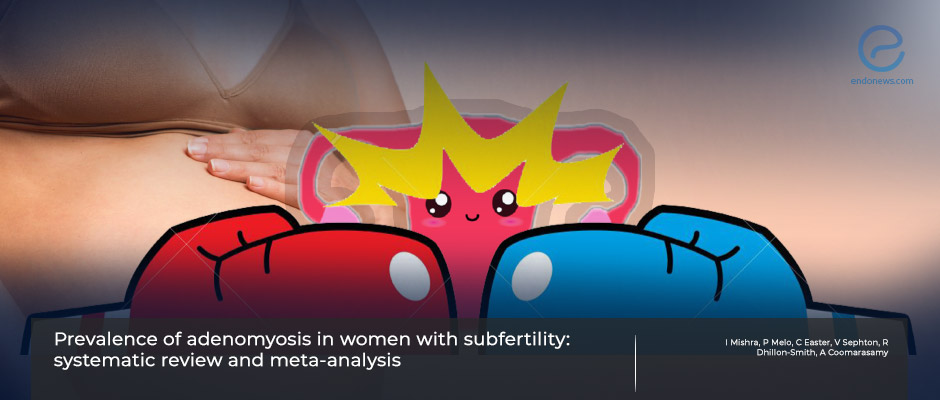How Common is Adenomyosis Among Subfertile Women?
Mar 9, 2023
About one in ten subfertile women have adenomyosis, study finds.
Key Points
Highlights:
- 10% of subfertile women have adenomyosis.
- The prevalence of adenomyosis varies with the presence of fibroids and endometriosis
Importance:
- Using well-established diagnostic criteria to report adenomyosis are necessary to ensure that no woman is left undiagnosed or misdiagnosed.
What's done here:
- This study is a literature review and meta-analysis.
Key results:
- The prevalence of isolated adenomyosis was 10% among subfertile women.
- The prevalence of adenomyosis plus fibroids was also 10%.
- The prevalence of adenomyosis plus endometriosis was 18%.
- The prevalence of adenomyosis plus fibroids and endometriosis was 17%.
- The prevalence of adenomyosis was highest in Australia and lowest in Asia.
Limitations:
- The studies included in the meta-analysis were inherently heterogeneous.
- The quality assessment of the studies that were included in the meta-analysis was limited because no validated tool exists that can assess the methodological quality of prevalence studies.
Lay Summary
Around 10% of women who have reduced fertility have isolated adenomyosis, according to a new study published in the scientific journal Ultrasound in Obstetrics & Gynecology. The prevalence of the disease seems to vary according to the presence of endometriosis or fibroids.
In order to determine how common adenomyosis is in women with reduced fertility, a team of researchers from the UK led by Professor Arri Coomarasamy from the Institute of Metabolism and Systems Research, Tommy's National Centre for Miscarriage Research, University of Birmingham and CARE Fertility Birmingham conducted a systemic review and meta-analysis of the literature.
The team identified 21 studies that included 25,600 women. The pooled prevalence of adenomyosis among these women was 10%. The prevalence of adenomyosis together with fibroids was also 10% and it was 18% together with endometriosis. Finally, the prevalence of adenomyosis together with fibroids and endometriosis was 17%.
The prevalence of isolated adenomyosis was substantially different depending on geographic location. Accordingly, the highest pooled prevalence of isolated adenomyosis was seen in Australia at 19%, while the lowest prevalence was seen in Asia at 5%.
The pooled prevalence of isolated adenomyosis diagnosed with direct and indirect ultrasound scan features was 11%. However, with only indirect features, it was 0.45%. Direct features include myometrial cysts, hyperechogenic islands, and echogenic sub-endometrial lines and buds while indirect features are asymmetrical myometrial thickening, globular uterus, fan-shaped shadowing, translesional vascularity, and irregular and interrupted junctional zone.
“There is a need for future studies to use standardized and uniform diagnostic criteria to diagnose adenomyosis,” the researchers wrote. “This would not only reduce inter-observer variability but also mitigate inter-study heterogeneity in future meta-analyses”.
Research Source: https://pubmed.ncbi.nlm.nih.gov/36647238/
adenomyosis fibroids fertility ultrasound geography myometrial hypoecohogenic

